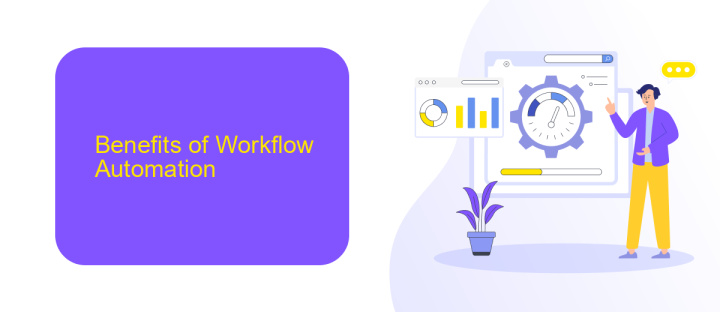Workflow Automation PPT
Workflow automation has become a pivotal tool in enhancing business efficiency and productivity. This presentation delves into the core concepts of workflow automation, showcasing its benefits, key components, and real-world applications. By streamlining repetitive tasks and optimizing processes, businesses can achieve significant time and cost savings, ultimately driving growth and innovation. Join us as we explore the transformative power of workflow automation.
Introduction
Workflow automation is a transformative approach that streamlines business processes by automating repetitive tasks and workflows. This not only enhances efficiency but also allows teams to focus on more strategic activities. In today's fast-paced business environment, the adoption of workflow automation tools has become essential for maintaining competitive advantage.
- Reduces manual errors
- Increases productivity
- Enhances process consistency
- Enables better resource management
Integrating various applications and services is crucial for effective workflow automation. Tools like ApiX-Drive simplify this process by allowing seamless integration of different platforms without requiring extensive technical knowledge. By leveraging such services, businesses can ensure that their automated workflows are both efficient and scalable, ultimately driving better overall performance.
Benefits of Workflow Automation

Workflow automation significantly enhances productivity by streamlining repetitive tasks and minimizing human errors. By automating routine processes, employees can focus on more strategic activities, leading to improved efficiency and faster project completion times. This not only boosts individual performance but also contributes to the overall growth of the organization.
Moreover, workflow automation facilitates seamless integration between various tools and platforms, ensuring smooth data flow and communication. Services like ApiX-Drive enable businesses to effortlessly connect different applications, enhancing interoperability and reducing manual intervention. This results in more accurate data management and better-informed decision-making, ultimately driving business success.
Key Considerations for Workflow Automation

When implementing workflow automation, it is crucial to consider several key factors to ensure a smooth and efficient process. Proper planning and evaluation can significantly enhance the effectiveness of automation tools and techniques.
- Identify repetitive tasks: Determine which tasks are repetitive and time-consuming, making them ideal candidates for automation.
- Choose the right tools: Select automation tools that align with your business needs and can integrate seamlessly with existing systems. For instance, ApiX-Drive offers robust integration capabilities to connect various applications effortlessly.
- Ensure scalability: Opt for solutions that can scale with your business growth, accommodating increasing workloads without compromising performance.
- Monitor and optimize: Regularly monitor automated workflows to identify bottlenecks or inefficiencies and make necessary adjustments to optimize performance.
- Train your team: Provide adequate training to your team to ensure they understand how to use and manage the automation tools effectively.
By considering these factors, businesses can maximize the benefits of workflow automation, leading to increased productivity, reduced errors, and more efficient operations. Careful planning and continuous improvement are essential to achieving long-term success with automation.
Types of Workflow Automation

Workflow automation streamlines business processes by reducing manual tasks and increasing efficiency. Different types of workflow automation cater to various needs, enabling organizations to optimize their operations effectively.
One common type is task automation, where repetitive tasks are automated to save time and reduce errors. Document automation is another type, focusing on generating, managing, and storing documents automatically. Additionally, integration automation connects different software systems to ensure seamless data flow without manual intervention.
- Task Automation: Automates repetitive tasks to save time.
- Document Automation: Manages and stores documents automatically.
- Integration Automation: Connects software systems for seamless data flow.
Services like ApiX-Drive facilitate integration automation by connecting various applications, allowing data to flow smoothly between them. This helps businesses avoid manual data entry and ensures that information is always up-to-date across all platforms. By leveraging these types of workflow automation, organizations can significantly enhance their productivity and operational efficiency.
Best Practices for Workflow Automation
To ensure effective workflow automation, it is crucial to start by clearly defining your objectives and mapping out your processes. Understanding the specific tasks that need automation and the outcomes you expect will help in selecting the right tools and strategies. Regularly review and optimize your workflows to eliminate redundancies and ensure they align with your business goals.
Integrating various applications and services is another best practice for seamless workflow automation. Tools like ApiX-Drive can facilitate the integration of multiple platforms, enabling data to flow effortlessly between them. This not only saves time but also reduces the risk of errors. Ensure that your team is trained on how to use these tools effectively and continuously monitor the performance of your automated workflows to make necessary adjustments.
FAQ
What is workflow automation?
How can workflow automation benefit my business?
What types of tasks can be automated in a workflow?
How do I get started with workflow automation?
Is workflow automation difficult to implement?
Apix-Drive is a universal tool that will quickly streamline any workflow, freeing you from routine and possible financial losses. Try ApiX-Drive in action and see how useful it is for you personally. In the meantime, when you are setting up connections between systems, think about where you are investing your free time, because now you will have much more of it.

